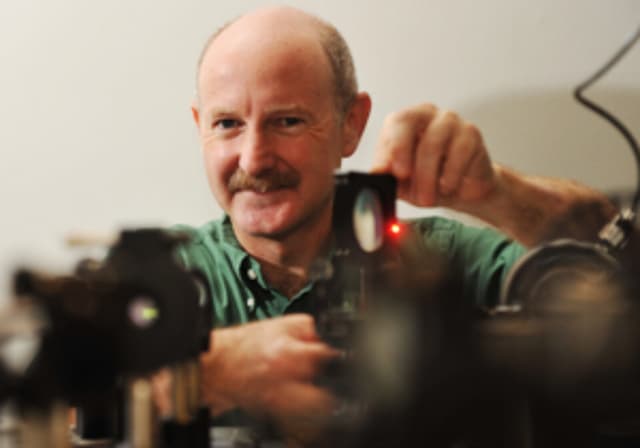Columbia Establishes NeuroTechnology Center, Latest Step in Commitment to Interdisciplinary Neuroscience

(Originally published by Columbia University)
October 17, 2014
Columbia University today announced the establishment of an interdisciplinary NeuroTechnology Center with a mission to develop advanced optical, electrical and computational technologies for the study of complex neurobiological systems.

The Center draws together researchers from Columbia’s Faculty of Arts and Sciences, Fu Foundation School of Engineering and Applied Science, Mortimer B. Zuckerman Mind Brain Behavior Institute and Kavli Institute for Brain Science. It is led by Rafael Yuste, professor of biological sciences and neuroscience, an authority on the development of optical methods in neuroscience. Yuste, a co-director of the Kavli Institute, was the lead author of the initial Brain Activity Map proposal that was vital to President Obama’s BRAIN initiative.
“President Bollinger has made it a core mission that Columbia be a place that brings together the most accomplished scholars from across our campuses, schools and departments to address great questions about the human brain,” said David Madigan, Columbia’s executive vice president for arts and sciences. “Rafael Yuste is among the world’s leading experts in the development of optical methods for mapping the brain and this new Center under his leadership adds another critical piece to our collective scholarship at the frontiers of neuroscience.”
The new Center provides scientific and intellectual cohesion to an already existing group of independent researchers in the biological and physical sciences, and engineering and data sciences. It supports and facilitates the education and training of undergraduates, graduate students, postdoctoral researchers and faculty on the newest technologies. The Center’s initial activities are funded by a seed gift from the Kavli Foundation.
Examples of projects within the Center’s mission include the development of in vivo microelectrode technologies for use in neuroscience and of novel computational methods to analyze large-scale recordings of neuronal activity. These tools and technologies are developed in close integration with researchers in the Zuckerman Institute, who then become users of the technologies.
Interview with Director Rafael Yuste
Technological leaps in neuroscience are enabling researchers to study the brain in unprecedented detail. With the launch of the NeuroTechnology Center, Columbia University has officially joined the neurotechnology race. In this interview, Neurotechnology Center Director Rafael Yuste talks about the road ahead for the new center and its mission to develop tools critical for understanding the brain.
“The interface between neuroscience and the physical sciences is creating powerful new tools that provide new ways of understanding the brain,” said Yuste. “By fostering a dynamic environment where scholars with different areas of expertise can come together to generate brand new methods, technologies and insights — and by interacting with the strong core of the Zuckerman Institute faculty — this Center will help define Columbia’s position among the leading centers of neuroscience and neurotechnologies in the world. You couldn’t dream of a better synergy between tool builders and tool users.”
The development of highly complex data at the Center also sparks a “two-way street” of innovation together with the expertise and resources of Columbia’s Institute for Data Sciences and Engineering.
“The Neurotechnology Center provides a new focal point on the Morningside Heights campus for the most advanced neuroscience research,” said Mary C. Boyce, dean of Columbia Engineering. “The ongoing exploration of the complexities and intricate mechanisms of the brain helps inspire the invention of pioneering tools and techniques that will enable us to see, measure and reach even further.” The Center is co-directed by Ken Shepard, professor of engineering and biomedical engineering, an expert in electrical design and nanofabrication who also participated in the Brain Activity Map workshops and proposals; Virginia Cornish, professor of chemistry and expert in molecular probe design; and Liam Paninski, professor of statistics and neuroscience, a specialist in data analysis methods for neuroscience.
The Center will host the Kavli Futures Symposium: The Novel NeuroTechnologies on November 3-4, and future annual symposia. Registration is now open. To learn more, visit: www.ntc.columbia.edu.
“The Neurotechnology Center neatly captures the spirit of Columbia’s interdisciplinary approach to the biomedical and physical sciences,” said neurobiologist Thomas Jessell, co-director of the Zuckerman Institute. “By bringing together today’s technical innovators, the Center drives advances in many scientific fields, not least the strengths in the neural sciences represented in the Zuckerman Institute.”
